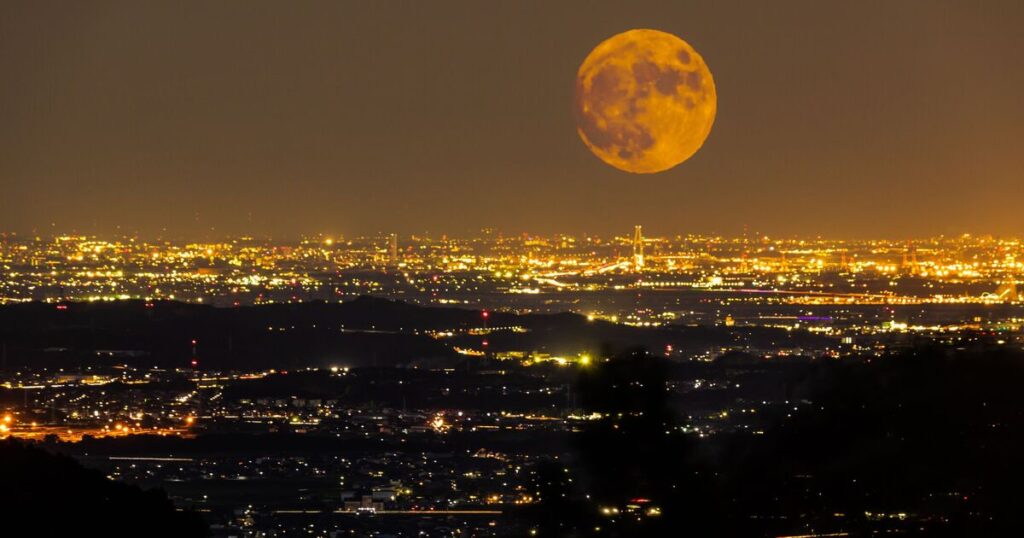
On October 7 at approximately 18:20GMT, the first supermoon of 2025 will ascend into the UK skies, marking the beginning of a trio of consecutive supermoons in the final three months of the year, with the most impressive expected in November.
However, the remnants of storm Amy might still be present when the supermoon is due to appear, so Brits should keep an eye on the weather forecast as cloud cover could obstruct their view. The supermoon should remain visible for several nights, providing multiple opportunities to witness this lunar spectacle.
A supermoon happens when the moon is ffull and at its closest point to Earth. Due to the moon’s elliptical orbit around our planet, this proximity makes it appear significantly larger and brighter. The last supermoon was observed on 17 October 2024, according to Royal Museums Greenwich. The forthcoming supermoons are anticipated around 5 November, 4 December and then not until Christmas Eve in 2026.
Supermoons can be easily seen from almost anywhere without any special equipment, as long as the sky isn’t too cloudy. They also provide a fantastic opportunity for those with binoculars or telescopes to observe the moon’s surface in greater detail, or for keen photographers to capture some stunning lunar images.
Royal Museums Greenwich suggests keeping your eyes peeled on the horizon slightly earlier during the evening this week to witness the most breathtaking views of this lunar spectacle.
It states: « Seeing moonrise just after sunset or moonset just before sunrise will be an impressive sight as the Moon will appear enormous compared to the surrounding landscape. »
The institution outlined how a supermoon forms: « The distance between the Moon and the Earth varies, because the Earth is not right at the centre of the Moon’s orbit and the Moon’s orbit is not a circle (it’s an ellipse).
« The moment when the Moon is closest to the Earth is called a lunar perigee. When the Moon is furthest away it is known as a lunar apogee.
« If the lunar perigee occurs very close to a full Moon, then we see a supermoon. If a lunar apogee occurs very close to a full moon then we see a micromoon.
« The term ‘supermoon’ originates from a concept in astrology, but now has been adopted by some astronomers. One strict definition of a supermoon is that if the Moon is within 10 per cent of its closest distance at the moment of full Moon, it is considered a supermoon. »
This month’s full moon isn’t merely a supermoon but also carries the titles of Harvest Moon and Hunter’s Moon.
The Harvest Moon is a name bestowed upon the full moon nearest to the autumnal equinox which fell on September 22. Harvest Moons, known for their appearance around sunset over several evenings, have traditionally provided extra light for farmers preparing for the winter season.
The October full moon also goes by another name, the Hunter’s Moon. This moniker harks back to centuries past when animals, fattened up for the winter season, would roam empty fields, their forms illuminated by the bright light of the Hunter’s Moon.
